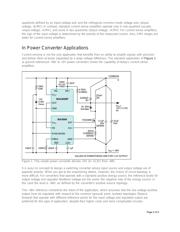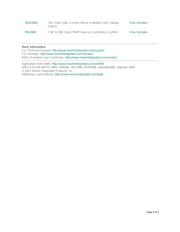
Maxim > Design Support > Technical Documents > Application Notes > Amplifier and Comparator Circuits > APP 4495
Maxim > Design Support > Technical Documents > Application Notes > Power-Supply Circuits > APP 4495
Keywords: current-sense amplifiers, stepup converter, boost converter, instrumentation amplifiers, IAs,
high common mode, telecom
APPLICATION NOTE 4495
Current-Sense Amplifier Doubles as a High-
Common Mode Instrumentation Amplifier
By: Ahmad Ayar
Dec 03, 2012
Abstract: This application note discusses differences between current-sense and instrumentation
amplifiers. The article also shows how a standard boost converter (MAX668) and a current-sense
amplifier (MAX4080) can form a regulator that derives +5V from -48V, without isolation, and why this
matters for the telecom industry.
A similar version of this article appeared in the November 1, 2008 issue of Power Electronics Technology
magazine.
Introduction
Instrumentation amplifiers (IAs) are used where gain accuracy and dc precision are important, such as in
measurement and test equipment. The downside of IAs is the cost. However, inexpensive current-sense
amplifiers handle high common-mode voltages and share some traits with IAs. As a result, in some
applications, such as a ground-referenced -48V to +5V power converter, current-sense amplifiers can
replace IAs, thereby reducing cost.
Current-Sense Amplifiers vs. Instrumentation Amplifiers
A current-sense amplifier senses the voltage developed by a precision "sense resistor" connected across
its differential inputs. The resistor sits at a voltage level higher than that of other supplies in the system.
The output, a scaled-up precision single-ended replica of the differential input voltage, is referred to the
system equipotential (ground).
The precision gain of the current-sense amplifier reduces, for a given current value, the voltage burden
imposed by the sense resistor on the line in which current is measured, since less drop in the sense
resistor is required for the output voltage needed to measure it. A current-sense amplifier therefore
complies with the basic description of a voltage instrumentation amplifier (IA): it is a precision-gain
differential amplifier.
The main difference between current-sense amplifiers and IAs is that IAs generally operate in the four
Page 1 of 5







